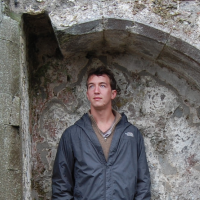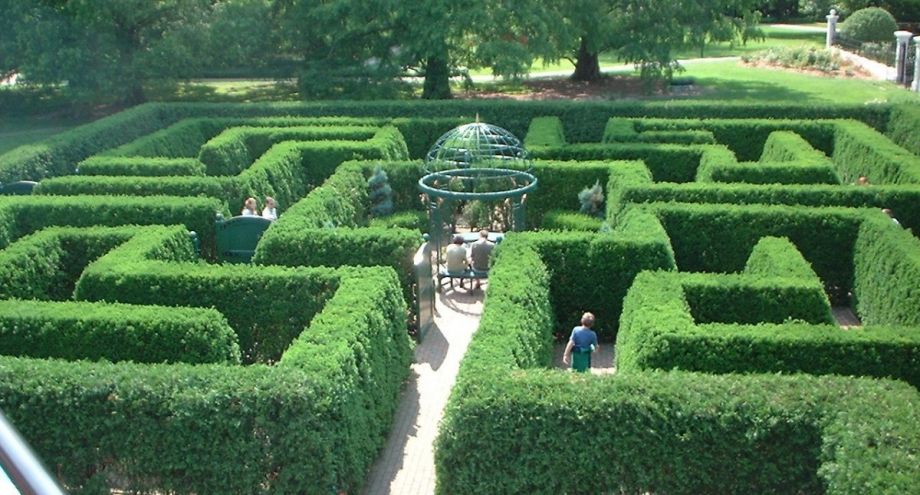In October, the Nobel Prize in Physiology or Medicine was awarded to three neuroscientists whose two discoveries have together formed our understanding of the brain’s navigation system.
The brains in question belong mostly to rats and mice, but there’s evidence that a similar network of “place cells,” first observed by John O’Keefe in 1971, and “grid cells,” found in 2005 by the husband-and-wife team of May-Britt Moser and Edvard Moser, exist in the heads of many mammals, including humans.
Place cells, which fire when the brain recognizes a corresponding geographical landmark (like your house, or the Space Needle) and offer a two-dimensional map of familiar environments, are the better understood of the two. Grid cells remain at a scientific frontier. Like a scalable set of coordinates, they are not tied to particular places — but are adjusted as needed to mark off the space around us, reused and recalibrated for new situations.
Now, researchers from University College London have shown how grid cells help us combine mental maps, joining rooms into a house, blocks into a neighborhood and neighborhoods into a city.
“You have these ‘Eureka!’ moments when you understand how places are related, and it makes you feel much more at home in your city,” says Francis Carpenter, a Ph.D. student in biology at UCL and the first author of the paper published in Cell Biology last week. That elation stems not only from the gradual accumulation of knowledge, but the fusion of distinct internal maps into a coherent whole — an observable shift in neural firing patterns.
Earlier research by the Mosers had shown how grid cells fire as an animal moved through a room, lighting up when a rat hit particular points. Essentially, as a rat crosses a room, its brain is playing a version of Dance Dance Revolution: The board is a hexagonal lattice projected across the floor, and every time a rat hits an intersection its grid cells light up. That, neuroscientists believe, is how the brain registers movement through space.
How the brain imposes that honeycomb grid on the world, however, hasn’t been clear. Carpenter’s research asked a seemingly simple question: Is grid firing determined by local sensory cues (the walls that can be seen or felt, say) or does it correspond to a more sophisticated body of knowledge and experience?
In the experiment, rats were tracked as they moved through two identical spaces opening onto a corridor (think adjoining hotel rooms). At first, the rats’ grid pattern was identical in each room, and disconnected, as if the rats did not “realize” that the first space was different from (and connected to) the second. But with time, the rats’ grids merged to form a comprehensive pattern that covered the entire environment. It is, the authors write, the first evidence that grid cell firing can evolve into a pattern capable of supporting extensive navigation.
“The grid cell is beautifully set up to create a linkage between small representations, making a unified global map,” says John Kubie, an associate professor of biology at SUNY Downstate Medical Center in Brooklyn. The experiment, he says, offers compelling evidence for how grid cells could complement and relieve place cells. (A third and crucial piece of the puzzle, he notes, are “head direction” cells, which, like a compass, help the brain maintain its sense of orientation.)
Researchers can be wary of drawing direct comparisons between rats and humans. But for Carpenter, the analogy to urban life was impossible to resist. “I think it’s something people can relate to,” he said. “When you go on the subway between two points you have two separate maps. But it’s moving actively between two points that allows this [greater] map to form, and you get a more coherent sense of how these points are connected in space.”
The research seems to jibe with earlier findings that active navigation offers strong cognitive benefits. The most famous example comes from a study of London cab drivers, conducted by another UCL neuroscientist, Eleanor Maguire, which found that the sophistication of a cabbie’s internal map was linked to greater development in the hippocampus (which is where place cells are). Even using a paper map to get around, as opposed to turn-by-turn directions, can lead to improved spatial memory.
For the rats, repeated movement between the two rooms helped resolve distortions in the grid. As a human guided by a GPS system, Carpenter surmises, “you might not have a reason to smooth over these distortions in the same way.”
Knowing that travel between two neighborhoods might be recalibrating the brain’s sense of the city, did Carpenter feel an incentive to walk or cycle rather than taking the Tube? No more than before, he says. But then he has always had an intuitive preference for surface transport.
As we spoke, on Thursday, he was preparing to jog home through London — exercising the body, and potentially, merging maps in the mind.
The Science of Cities column is made possible with the support of the John D. and Catherine T. MacArthur Foundation.

Henry Grabar is a senior editor at Urban Omnibus, the magazine of The Architectural League of New York. His work has also appeared in Cultural Geographies, the Atlantic, The Wall Street Journal and elsewhere. You can read more of his writing here.
Follow Henry .(JavaScript must be enabled to view this email address)














